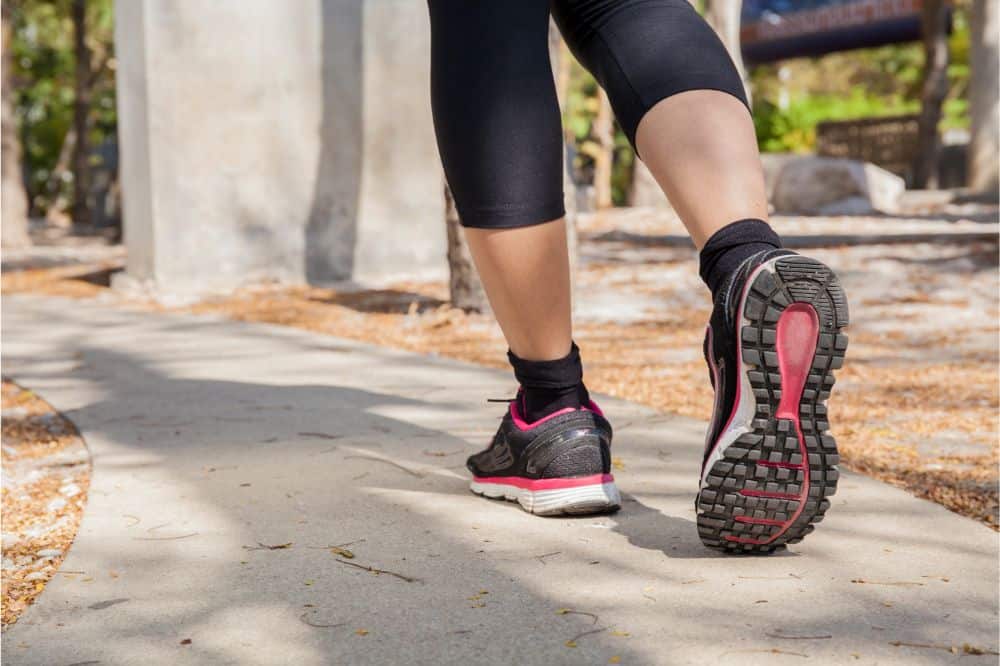Mountain biking is thrilling, but it’s also a high-stakes sport where safety comes first. Among all the protective gear you need, a well-fitted helmet is non-negotiable.
Surprisingly, though, many riders overlook the importance of a properly adjusted helmet. They often wear one that’s too loose, too tight or tilted in a way that reduces its protective power.
When a helmet fits correctly, it will distribute impact forces across a broader area and shield your head from severe injury. But for many riders, the adjustment process is confusing.
From the chin strap to the retention system, each part plays a unique role in keeping the helmet secure, yet comfortable, no matter the terrain.
In this guide, we’ll walk you through each step to ensure your helmet is properly adjusted and primed to keep you safe.
We’ll cover everything from choosing the right size and position on your head to fine-tuning the straps for maximum stability.
So, whether you’re a beginner or an experienced trail rider, these steps will give you peace of mind and help you focus on the adventure ahead.
Let’s get started.
Understanding the Anatomy of a Mountain Bike Helmet
Key Components
· Shell and Liner
The shell and liner work together as the first line of defense in a helmet. The outer shell is often made from hard plastic or fiberglass. It disperses impact across the surface.
The liner is typically constructed from EPS foam. It absorbs shock by compressing upon impact. This combination minimizes direct force on the skull.
Thus, making the helmet a crucial barrier against traumatic head injuries.
· Retention System
The retention system is what keeps the helmet snugly in place. It comprises of adjustable straps and, in many models, a rear dial.
These straps, when properly tightened and positioned, prevent the helmet from shifting during sudden movements or falls.
A secure fit is vital not only for comfort but also to ensure the helmet remains stable and effective in protecting the head.
· MIPS (Multi-directional Impact Protection System)
MIPS is an advanced feature found in certain helmets. It is designed to reduce rotational forces during angled impacts.
It includes a low-friction layer within the helmet. This layer moves slightly in response to impact, mimicking the brain’s natural defense mechanisms.
This extra layer of protection can also help reduce the severity of rotational injuries. These are common in mountain biking accidents.
Each component of the helmet plays a specific role in ensuring a secure and effective fit. The shell and liner must sit comfortably around the head without too much movement.
That allows for comprehensive impact absorption. The retention system is essential for keeping the helmet in place on rough trails.
On the other hand, MIPS-equipped helmets offer enhanced safety
for those looking to maximize protection.
Together, these elements make a properly fitted helmet a fundamental part of mountain biking safety.

Positioning the Helmet on Your Head
The Correct Helmet Placement
Where Should the Helmet Sit?
The helmet should sit level on your head, covering the upper forehead and resting about 1-2 finger widths above the eyebrows.
This mid-forehead positioning ensures optimal protection for the frontal area of the skull. This area is often vulnerable during falls or impacts on rough terrain.
Why Does a Tilted Helmet Compromise Protection?
Wearing a helmet tilted too far back leaves the forehead exposed and reduces the helmet’s ability to absorb impact in the right areas.
A helmet that sits too far forward, on the other hand, can obstruct vision and affect balance. Proper positioning maximizes the helmet’s protective coverage.
This is particularly significant in forward or angled impacts, which are common in mountain biking accidents.
Adjusting the Retention Dial
Most mountain bike helmets feature a retention system. It’s often a dial at the back of the helmet, to achieve a customized fit.
To adjust, simply turn the dial until the helmet feels snug around the entire circumference of the head. This step ensures that the helmet will stay secure during vigorous movements.
Thus, preventing unwanted shifting or sliding.
A correctly adjusted helmet should feel stable without being too tight. To test, gently shake your head side-to-side and up-and-down.
The helmet should move minimally with your head rather than wobbling around. A well-fitted helmet enhances both safety and comfort.
It allows you to focus on the ride with the confidence that your helmet is securely in place.
Adjusting the Side Straps for Proper Alignment
To achieve optimal stability, adjust each side strap so they form a V-shape just below your ears. The straps should meet in a point below each earlobe.
Thus, creating a symmetrical “Y” on either side of your head. This configuration keeps the helmet balanced and securely in place. It ensures that it won’t shift forward or backward while riding.
The V-shape also positions the straps for even weight distribution and stability. They hug the sides of your head and prevent the helmet from tilting or sliding off.
This alignment is especially crucial for mountain biking. Here, varied terrains and jolting movements can easily dislodge a poorly adjusted helmet.
How Tight Should the Straps Be?
Side straps should be snug but not restrictive. Tighten until you feel a gentle grip, without the straps digging into your skin or causing discomfort.
This secure fit maintains helmet position during high-impact scenarios without sacrificing comfort.
To confirm the fit, move your head side-to-side and nod up and down. The helmet should stay relatively still, with minimal shifting.
If there’s excessive movement, adjust the straps further until the helmet remains stable. A properly tightened helmet helps you stay focused on the trail.
Setting the Chin Strap for Comfort and Security
Adjust the chin strap so it feels snug but comfortable. A simple rule of thumb: you should be able to fit 1-2 fingers between the strap and your chin.
This balance provides security while avoiding discomfort. A too-tight chin strap can create pressure points. On the other hand, a loose strap might let the helmet shift during movement.
In addition, ensure the chin strap doesn’t dig into your neck. This can happen if it’s too tight or angled incorrectly.
Position the strap so it rests comfortably under your chin rather than pressing against your throat. Reposition if necessary to prevent irritation, especially for long rides where discomfort can quickly become distracting.
Securing the Buckle
Once the strap is correctly adjusted, securely fasten the buckle. Most helmet buckles snap tightly into place, preventing accidental loosening. Test it by tugging gently; it should remain firmly latched.
During rides, re-check the chin strap occasionally, especially if you feel any shift in helmet stability. Terrain variations can subtly loosen straps.
Re-tightening when needed will ensure continuous protection and comfort. By keeping the chin strap snug throughout your ride, you maintain the highest safety level without sacrificing comfort.

Final Safety Checks Before Hitting the Trail
Shake Test
Before you set off, do a quick shake test: shake your head from side to side and nod up and down. The helmet should remain secure without slipping or shifting.
Any movement indicates a loose fit, which compromises protection. Readjust the retention system or chin strap as needed until the helmet stays stable.
Field of Vision Check
Positioning is crucial to avoid blocking your field of view. Look straight ahead and side-to-side, ensuring the helmet’s brim doesn’t interfere with your peripheral vision.
Especially important for trails, full visibility allows you to navigate obstacles confidently and respond quickly to changes in terrain.
For riders tackling rugged terrain, make sure the helmet’s position won’t require constant repositioning to maintain visibility.
Adjust the helmet’s angle if necessary to ensure it sits level on your head and doesn’t slide forward or backward.
Comfort Check
Take a moment to assess overall comfort. Check for any pinching, pressure points, or discomfort in areas like the temples, forehead, or under the chin.
If you notice any discomfort, fine-tune the adjustments to relieve pressure without compromising stability.
Before heading out, make final tweaks as needed. Small adjustments can make a significant difference in comfort and protection over a long ride.
Ensuring a proper fit now means you can fully focus on the trail ahead, with the peace of mind that your helmet is secure, comfortable, and ready to handle the journey.
Conclusion
Adjusting your helmet properly for safety is essential for protecting yourself on the trails.
Always ensure a snug and stable fit with correctly aligned straps, an adjusted chin strap, and a secure retention system.
This helps safeguard against unexpected impacts and enhances your confidence as you ride.
Remember, a helmet that’s well-positioned and comfortable allows you to focus fully on your ride rather than on any discomfort or fit issues.
Before each trail session, perform quick safety checks, like the shake test and field of vision assessment, to confirm everything is in place.
Investing a few extra moments in fitting your helmet correctly gives you peace of mind and helps maximize your safety on every adventure. So, get out there, stay safe, and enjoy the thrill of the trail!














